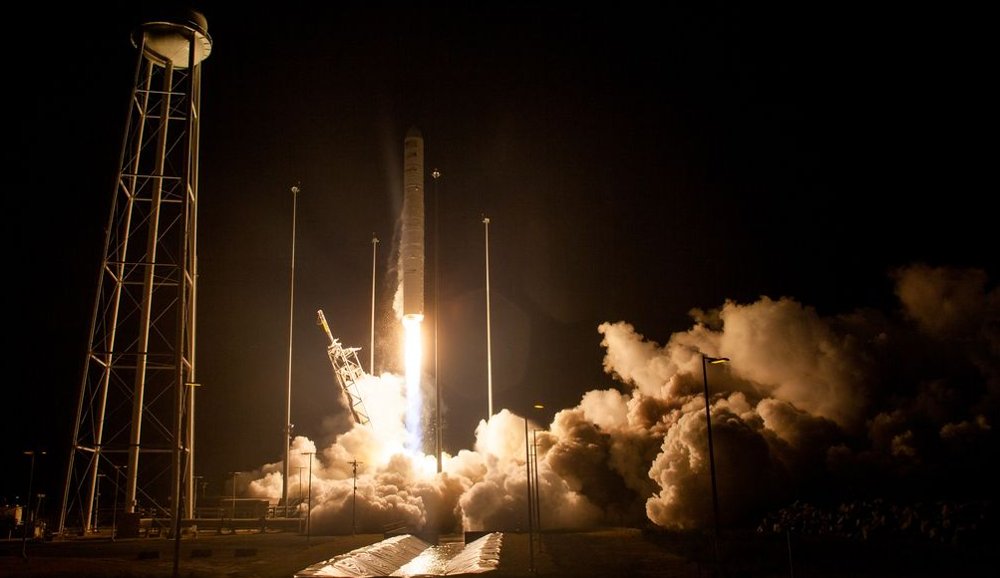NASA released an image that recorded the Antares missile explosion last year
The US Aeronautics and Space Administration (NASA) has just posted a high-resolution photo kit on Flickr, showing the worst moment of the national aviation science, when the rocket carries the spacecraft's train Orbitals Sciences broke up just a few seconds after leaving the launch pad. The images above record the entire "catastrophic" process of the Antares missile, launched from the Wallops Flight Facility (in Virginia) of NASA on October 28, 2014.
Photos of the rocket explosion Antares
At that time, Antares was carrying the Cygnus spacecraft , carrying food and supplies to the International Space Station (ISS). The event is in the early stages of NASA's Commercial Commodity Program, an initiative aimed at delivering cargo to ISS for private companies. It is known that this unexpected incident occurred in Orbital's third batch to the space station. SpaceX (the space cargo transport company founded by Elon Musk) also pledged to NASA through a contract and also failed in the Falcon 9 rocket launch.

Up to now, there are quite a number of opinions about the causes of accidents. Both Orbital and NASA agree that there is an explosion at one of the engine's fuel pumps (turbopump). However, no one knew what caused the explosion. Orbital seems to think there has been a defect in the turbopump, derived from the way it operates. If so, the responsibility will belong to this parts manufacturer - Aerojet Rocketdyne. According to NASA, they said there might be a problem in engine design, or it is likely that it is not an engine fault. A strange object made of titanium and silicon was found in the engine, where the explosion occurred. It could be said that Orbital did not assemble missiles according to the original design.
Regardless of what caused the "death" of the Antares missile, Orbital Sciences Group also had its own alternative: replacing the Aerojet engine with a Russian-designed engine - NPO Energomash. Although the next version of Antares will not be released at least next year, Orbital still needs to perform four resupply missions for NASA until the end of 2016. Therefore, in the next two missions, the The company will use the Atlas V rocket (with Russian-made RD-180 engine) to bring its Cygnus cargo ship to ISS. It is expected that the first flight will be carried out on December 3.

















- NASA finds clues that cause rocket explosions
- American rockets explode due to canceling the button
- Space disasters in NASA history
- NASA rocket exploded after six seconds of leaving the launch pad
- NASA first recorded a giant red star explosion
- NASA's most impressive moments of 2016
- The trail of a new explosion occurred on Mars
- Orbital ATK Group resumed shipping operations to ISS
- NASA publishes sharp images of unprecedented sharp images of black holes
- NASA destroyed the missile after the failed launch
- New success in US strategic space exploitation
- Shocking sign of the apocalypse in a photo of NASA just released
 The 11 most unique public toilets in the world
The 11 most unique public toilets in the world Explore the ghost town in Namibia
Explore the ghost town in Namibia Rare historical moments are 'colored', giving us a clearer view of the past
Rare historical moments are 'colored', giving us a clearer view of the past The world famous ghost ship
The world famous ghost ship 'Strange smell' detected on cargo spacecraft to ISS
'Strange smell' detected on cargo spacecraft to ISS  NASA selects partners to explore Saturn's moon Titan
NASA selects partners to explore Saturn's moon Titan  NASA releases video about the evolution of the universe after 12 years
NASA releases video about the evolution of the universe after 12 years  NASA opens the lid of the asteroid sample box that was stuck for months
NASA opens the lid of the asteroid sample box that was stuck for months  4 NASA scientists complete a year of 'trial living on Mars'
4 NASA scientists complete a year of 'trial living on Mars'  NASA Captures 'Ghost Light' That's Catching Us
NASA Captures 'Ghost Light' That's Catching Us 